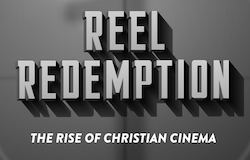No Risk, No Reward, by Tyler Smith
18 Dec

At this point in the Star Wars franchise, what started in 2015 as intense eagerness amongst the moviegoing public has slowly turned into a mild curiosity at best and a resentful obligation at worst. So many people, whether they enjoyed The Last Jedi or not, view the final film in the latest trilogy, The Rise of Skywalker, with exhausted trepidation; a weary desire to get some kind of closure. And it appears that director J.J. Abrams sensed this – not that it was particularly subtle – and has obliged by creating a film that is so focused on tying up loose ends that it often feels perfunctory. Through rushed scenes, last minute developments, and astonishingly-clumsy exposition, Abrams attempts to undo the perceived damage done to the mythology by the previous film while also giving every character as satisfying an arc as he can, all while trying to keep the events exciting and fresh. This many spinning plates would be difficult for even the best directors; Abrams, a reliable journeyman but hardly an engaging auteur, does his best, but mostly loses control of the juggernaut that The Rise of Skywalker was always destined to be.
The story picks up with the sudden – and arbitrary – return of Emperor Palpatine (Ian McDiarmid), previously thought to be dead but now tempting Kylo Ren (Adam Driver) with promises of immense, galaxy-destroying power. All Ren needs to do in return is kill Rey (Daisy Ridley), who poses an unspoken threat to Palpatine. Meanwhile, the Resistance attempts to gain ground in their fight against the First Order, with scrappy ex-storm trooper Finn (John Boyega) and cocky pilot Poe (Oscar Isaac) leading the charge.
All of this is shown with the harried pace of a waiter trying to take care of too many customers. We never get the chance to digest the information presented to us in one scene because we’ve quickly transitioned to another. As the film finally settles into a more manageable rhythm, and we finally get room to breathe, we are able to more fully appreciate what the actors are doing. Delivering the dialogue – which rarely rises above mere functionality – with conviction and energy, the cast does what it can to guide the audience through the maze of exposition, indicating how we should react to every new development.
Unsurprisingly, Driver and Ridley fare the best here, largely due to a depth of emotion that each bring to their characters. Both Kylo Ren and Rey are intensely tormented, one by the evil he has done in the past and the other by the evil she might do in the future. As has been the case throughout the recent films, when these two characters share the screen, their chemistry holds our attention in a way that the rest of the film simply doesn’t.
It is the brief lightsaber duels between Kylo Ren and Rey that work best, because they are imbued with real meaning by the actors. The rest of the action, while well-conceived, doesn’t really bring anything new to the series. When it comes right down to it, when you’ve seen one Star Wars space battle, you’ve really seen them all. And though Abrams’ talent for iconography serves him well here – most notably when demonstrating the sheer size and power of the First Order – the resulting action scenes devolve into pretty standard, CGI-driven predictability.
The Rise of Skywalker features plenty of fan service, some of it effective, some of it not. The reintroduction of Palpatine never has the weight that it really should and his presence ultimately feels like an afterthought; a Hail Mary inclusion to give the events of the film a more dire sense of importance. Unfortunately, despite the best efforts of the always-dependable Ian McDiarmid, Palpatine seems less like the Machiavellian monster of the earlier films and much more like the generic cosmic villains we would find in some of the lesser Marvel movies. Abrams also dusted off Lando Calrissian (Billy Dee Williams), the untrustworthy scoundrel first seen in The Empire Strikes Back, and presses him into action. Sadly, Lando is mostly underutilized in this film, his appearance amounting to little more than a cameo. Still, his on-screen time is more effective than that of the new characters introduced here, including a random freedom fighter named Jannah (Naomi Ackie) and a droid whose sole purpose likely has more to do with toy sales than anything involving the actual story.
But such is the difficulty of a movie like The Rise of Skywalker. It must balance the old and the new, hopefully pleasing the most loyal fans and the casual viewer. This is a tall order, so it only makes sense for Abrams to step lightly, which he most certainly does. Gone is the thematic complexity of The Last Jedi or the fatalism of Rogue One. To follow in those films’ footsteps is to risk alienating important segments of the audience. So J.J. Abrams and Disney choose to play it safe, and the resulting film is pleasant enough, but “safe and pleasant” isn’t exactly memorable.
The original Star Wars films – especially the first two – swung for the fences. Even George Lucas’ ill-conceived prequels had a bold, singular vision, misguided though it was. The problems with this film, however, are those inherent with any expensive, committee-driven, focused-grouped product: it takes no risks. And, as the saying goes, “No risk, no reward”. As such, with The Rise of Skywalker being so averse to challenging its audience and instead settling for by-the-numbers, predictable storytelling, the result is one of the least rewarding cinematic experiences I’ve had in some time.



No comments yet